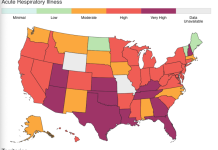Government pensions are valuable retirement benefits, but they have long come with a downside. A non-covered pension had the potential to reduce someone’s Social Security benefits by hundreds of dollars each month.
That’s because of two provisions of law: the Windfall Elimination Provision and the Government Pension Offset, commonly known as WEP and GPO. Each reduced the Social Security benefits of someone who also receives a pension from a job that did not pay taxes into the system.
“There was this concern initially that they were double-dipping,” says Yuval Bar-Or, a professor at the John Hopkins Carey Business School. It was deemed that someone receiving a government pension should not also receive Social Security benefits under the same formula as a retiree with no similar pension.
Now, more than 40 years after WEP was enacted, the Social Security Fairness Act has rolled it back. With bipartisan support, the act was signed into law on Jan. 5, 2025, but the Social Security Administration has yet to say how it plans to implement its provisions.
The Basics of WEP and GPO
While the GPO traces its roots to 1977, the WEP was established as part of the 1983 reforms to the Social Security system. Each has similar provisions, but they affected a different set of beneficiaries:
- WEP reduced the Social Security benefits of a person receiving a non-covered pension. For example, teaching jobs in some states do not pay into the Social Security system, but these workers may have second jobs that qualify them for Social Security benefits. Under WEP, their Social Security benefits were reduced due to their teacher pension.
- GPO is similar to WEP except that it affected the Social Security spousal and survivor benefits of someone receiving a non-covered pension.
“I think it was an effort to reduce Social Security costs,” according to Sharona Hoffman, professor of law and bioethics at the Case Western University School of Law and author of “Aging with a Plan: How a Little Thought Today Can Vastly Improve Your Tomorrow.”
There was also a question of fairness. Social Security benefits replace a larger portion of income for lower-income workers. For workers at full retirement age in 2023, Social Security replaced approximately 78% of the income for very low earners, 42% for medium earners and 29% for maximum earners, the Social Security Administration says.
However, if someone receives Social Security benefits based on only a portion of their income, they will benefit from a higher replacement rate than they would otherwise receive.
Before 1983, individuals whose primary job was not covered by Social Security were treated as long-term, low-income earners when their benefits were calculated. This allowed them to receive a disproportionately high percentage of their earnings as Social Security benefits while also receiving a pension from a job that did not require paying Social Security taxes. According to the SSA, the rationale for WEP was to remove this advantage.
“The WEP (couldn’t) completely eliminate that Social Security,” says Martha Shedden, president and co-founder of the National Association of Registered Social Security Analysts. The maximum reduction was about $600. But the formula used for the GPO was different. “That (could) entirely eliminate those benefits, especially spousal benefits,” according to Shedden.
Provisions of the Social Security Fairness Act
The Social Security Fairness Act eliminates WEP and GPO. With those provisions gone, all Social Security benefits will be calculated using the same formula, regardless of whether someone also had a non-covered pension.
It will affect a narrow population of people, according to Hoffman.
The Social Security Administration says about 2 million people – 3.1% of beneficiaries – were subject to WEP reductions in 2022. Meanwhile, nearly 13% of spousal and survivor beneficiaries were subject to the GPO in 2022. That amounts to roughly 735,000 beneficiaries.
Many people saw the WEP and GPO as unfairly penalizing people, and the Social Security Fairness Act was introduced to “right that wrong,” Bar-Or says. He notes that the bill passed with largely bipartisan support, and the issue is generally not seen as political.
That doesn’t mean the act doesn’t have drawbacks. Chief among them is the roughly $190 billion price tag over the next decade. “That’s not trivial,” Hoffman notes.
The loss of those funds means the Social Security trust funds will go insolvent about six months earlier than previously projected, according to the Congressional Budget Office.
Conflicting Opinions on Passage
Although it passed with wide support, reactions to the Social Security Fairness Act have been mixed.
“Congress broke a promise 40 years ago to millions of Americans when it enacted the Windfall Elimination Provision and the Government Pension Offset,” said Edward Kelly, general president of the International Association of Fire Fighters, in a press release marking the day when the legislation was signed into law. “Today, that promise has been restored, and retired firefighters and emergency medical workers will now receive the full Social Security benefits they’ve earned and paid into.”
Others wish the WEP and GPO had been addressed as part of a larger reform of the Social Security system.
“It is disappointing that this single-issue repeal of the rules did not consider possible amendments that could have addressed the tremendous financial impact on the trust funds and the challenging SSA implementation procedures that will be required,” Shedden said via email after the bill’s passage. She worries that a piecemeal approach to changing the Social Security system could have unintended consequences.
For now, it remains to be seen how the Social Security Administration will implement the new law. On its website, the agency states that affected beneficiaries don’t need to do anything other than verify they have provided their current mailing address and direct deposit information. Beyond that, the SSA says, “We will provide more information as soon as available.”






















